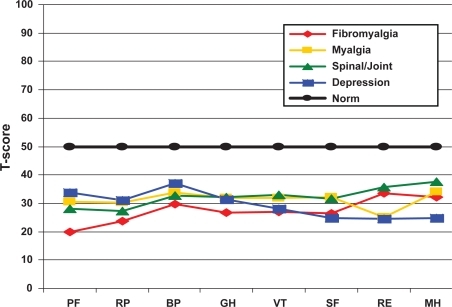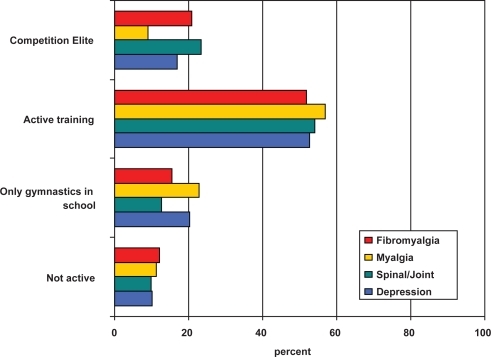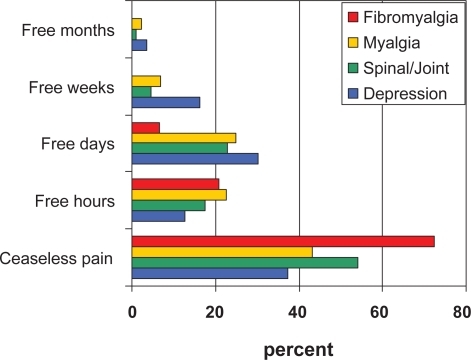Figures & data
Table 1 Patient subgroups based on diagnoses: fibromyalgia, myalgia, diseases in spine/joints, and depression. Number of patients in each group, mean age (years, SD); percent higher level of education and percent fully employed
Figure 1 Frequency of reported specific symptoms/functional impairments in patients with fibromyalgia (FM), myalgia, back/joint diagnoses, and depression sorted by increasing frequency of FM patients.
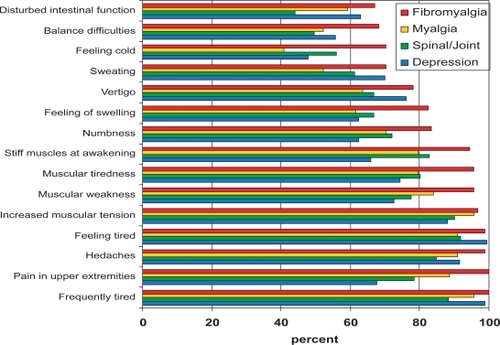
Figure 2 Symptom profile in patients with fibromyalgia (FM), myalgia, back/joint diagnoses, and depression. Symptoms along horizontal axis and scores, 0 = none, 1 = mild, 2 = moderate, 3 = severe, on vertical axis. Symptoms are sorted by decreasing FM scores.

Figure 3 Distribution of criteria for DSM-IV major depressive episode in patients clinically diagnosed as fibromyalgia (FM), myalgia, back/joint diagnoses, and depression, sorted by increasing frequency of criteria in FM patients.
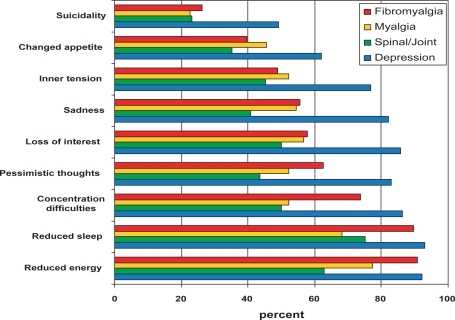
Figure 4 Means of criteria sums for DSM-IV personality disorders in patients with fibromyalgia (FM), myalgia, back/joint diagnoses, and depression ordered by increasing frequency of criteria in FM patients.
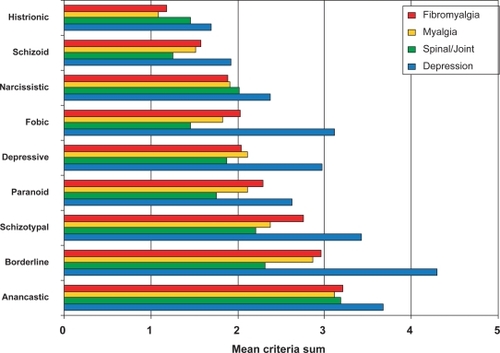
Figure 5 Frequency of reported difficulties in activities (ICF numbersCitation31 and description) in patients with fibromyalgia, myalgia, back/joint diagnoses, and depression sorted in increasing frequency for fibromyalgia patients.

Figure 7 Present levels of physical activity in patients with fibromyalgia and patients with other somatic disorders.
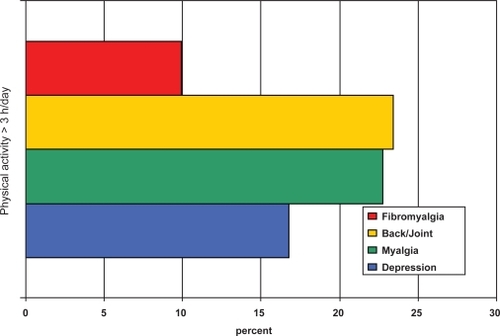
Table 2 Pain variables: Percent of patients with present pain; VAS least, worst, now (mm), and percent of patients with local debut of pain
Figure 10 Distribution of pain areas reported by more than 50% in patients with fibromyalgia (FM), myalgia, back/joint diagnoses, and depression.

Figure 11 Reported health-related quality of life in patients with fibromyalgia, myalgia, back/joint diagnoses, and depression.
